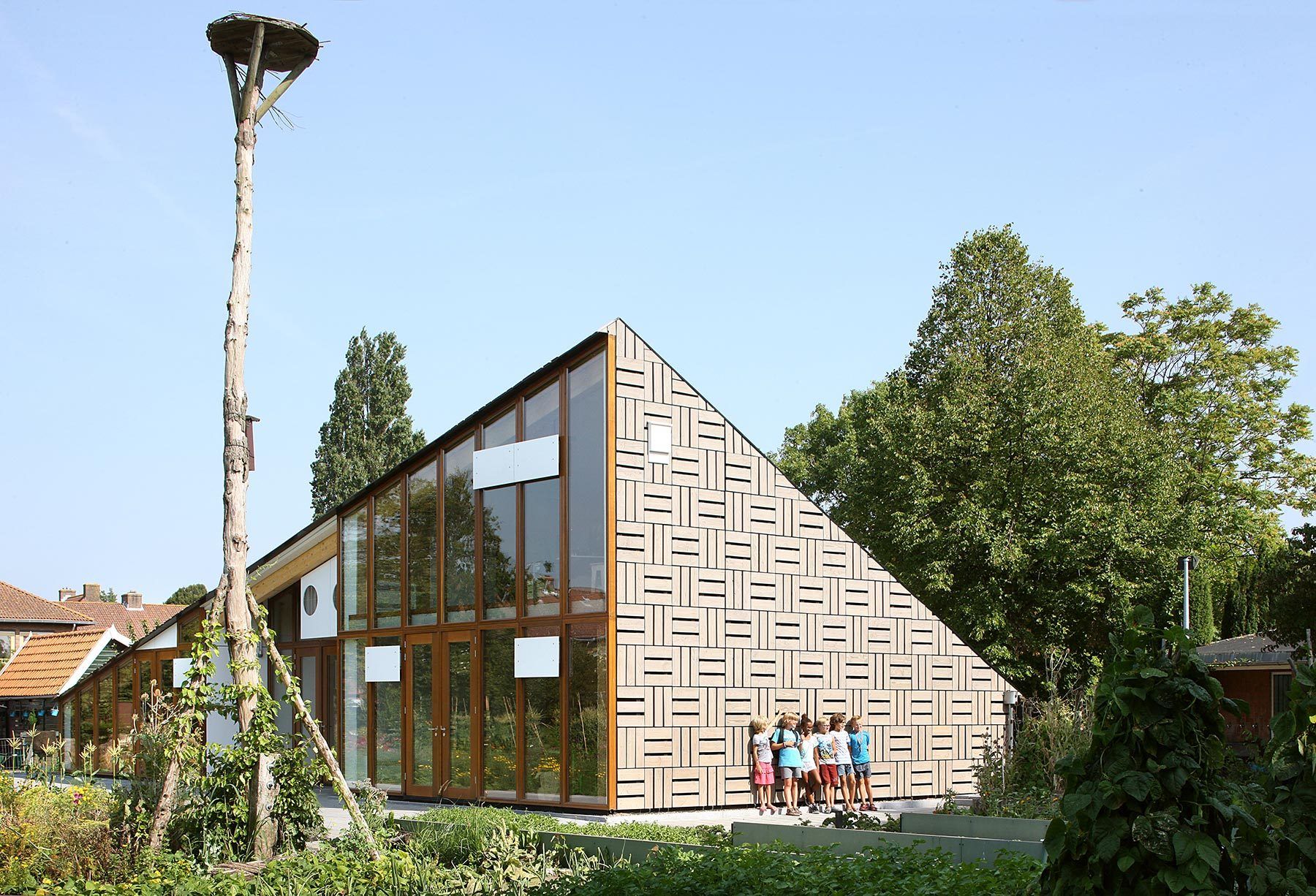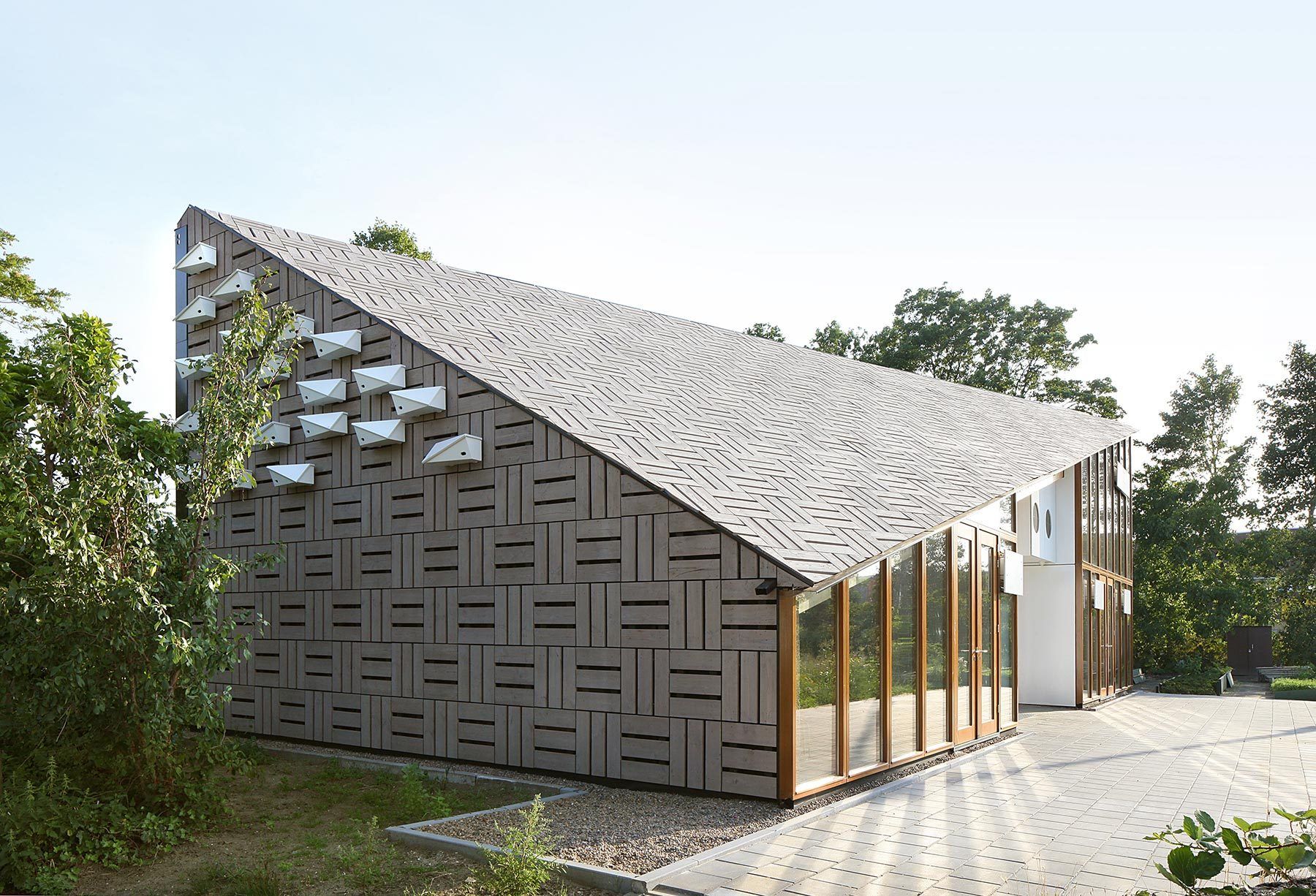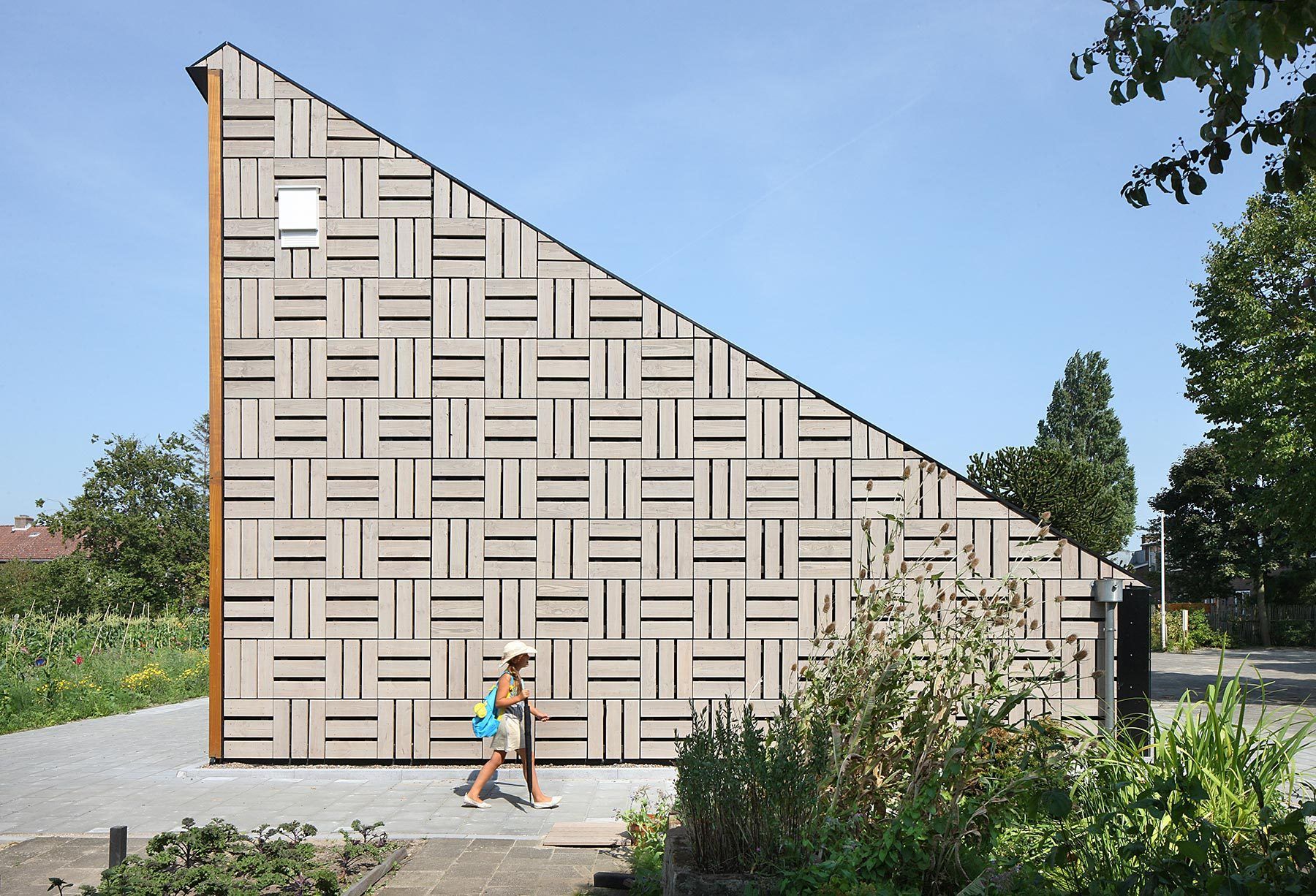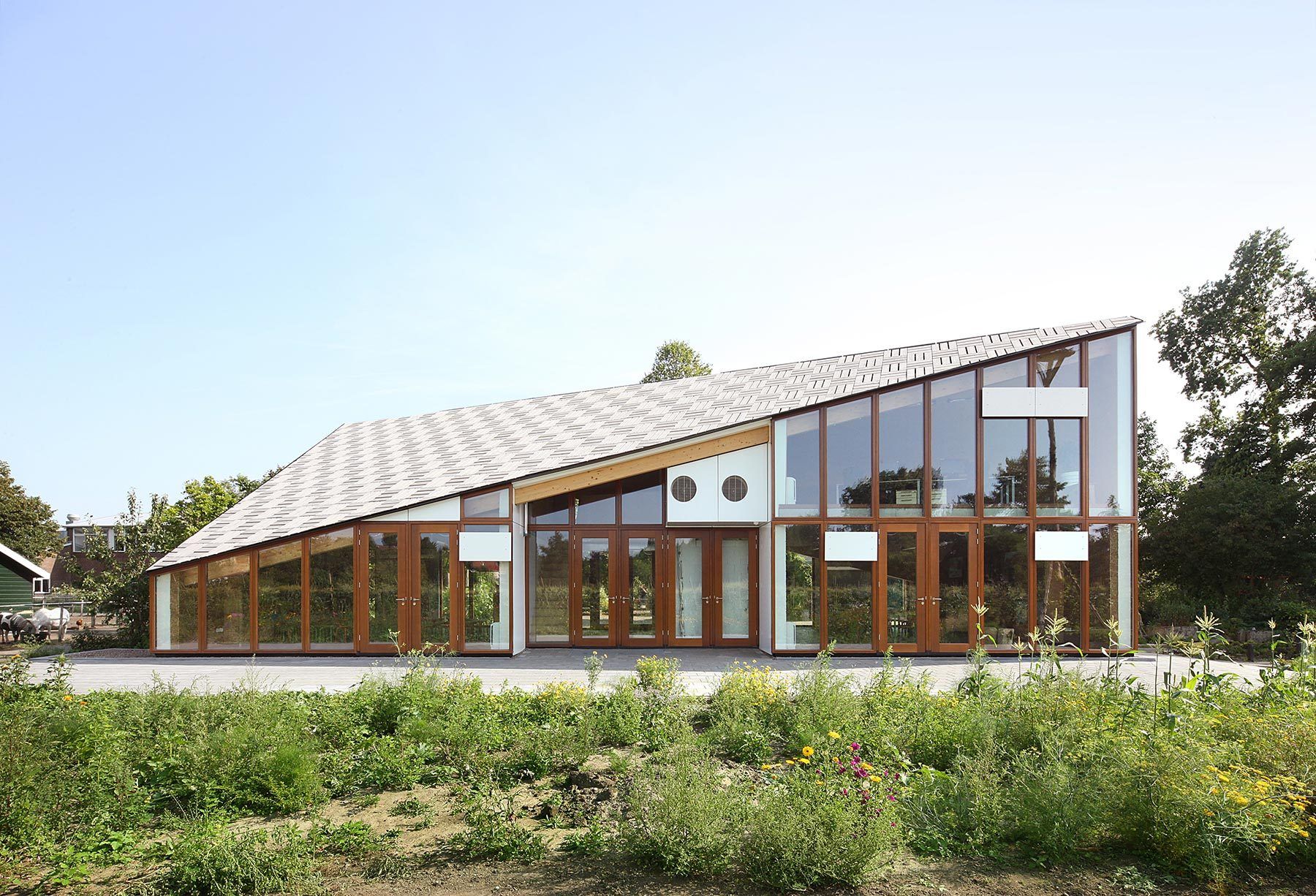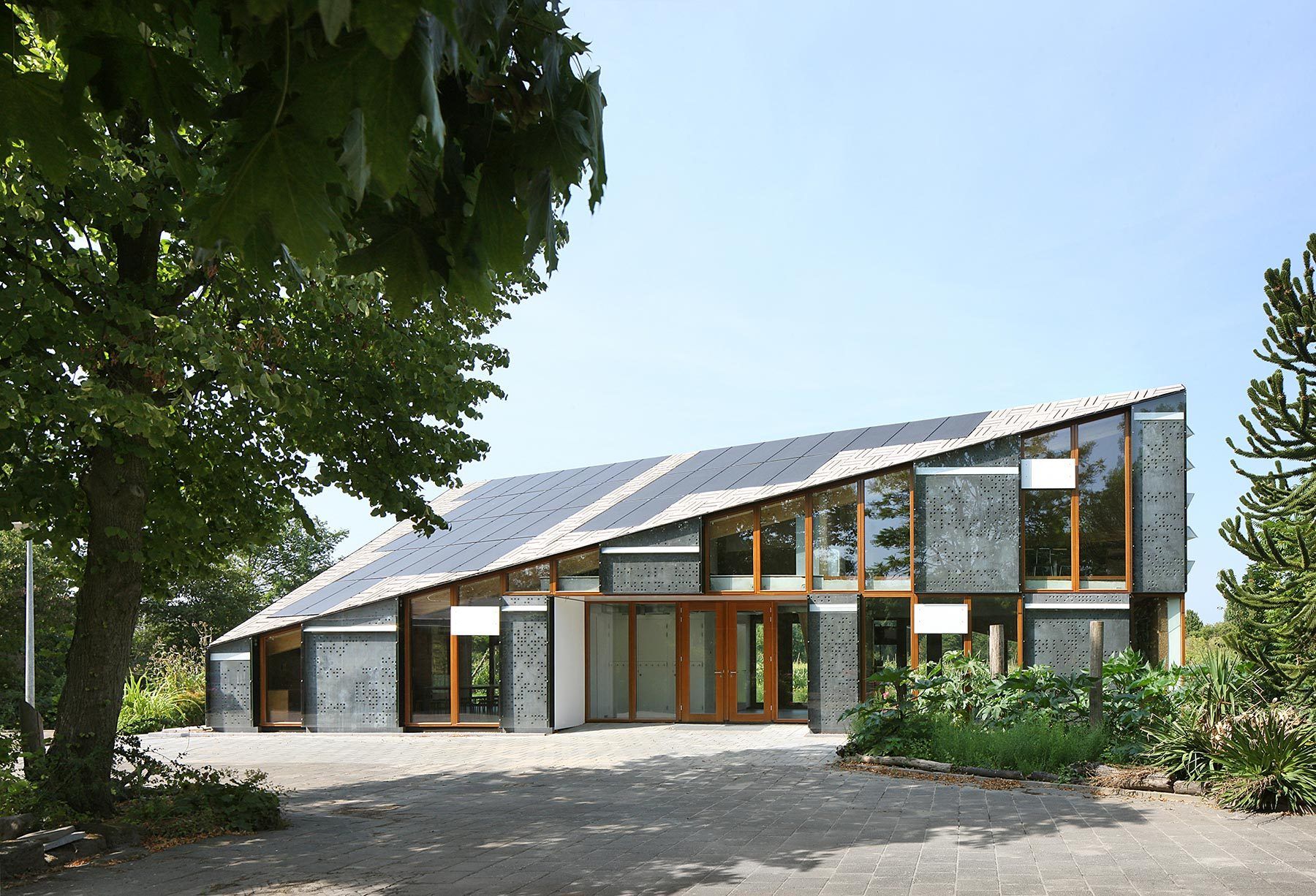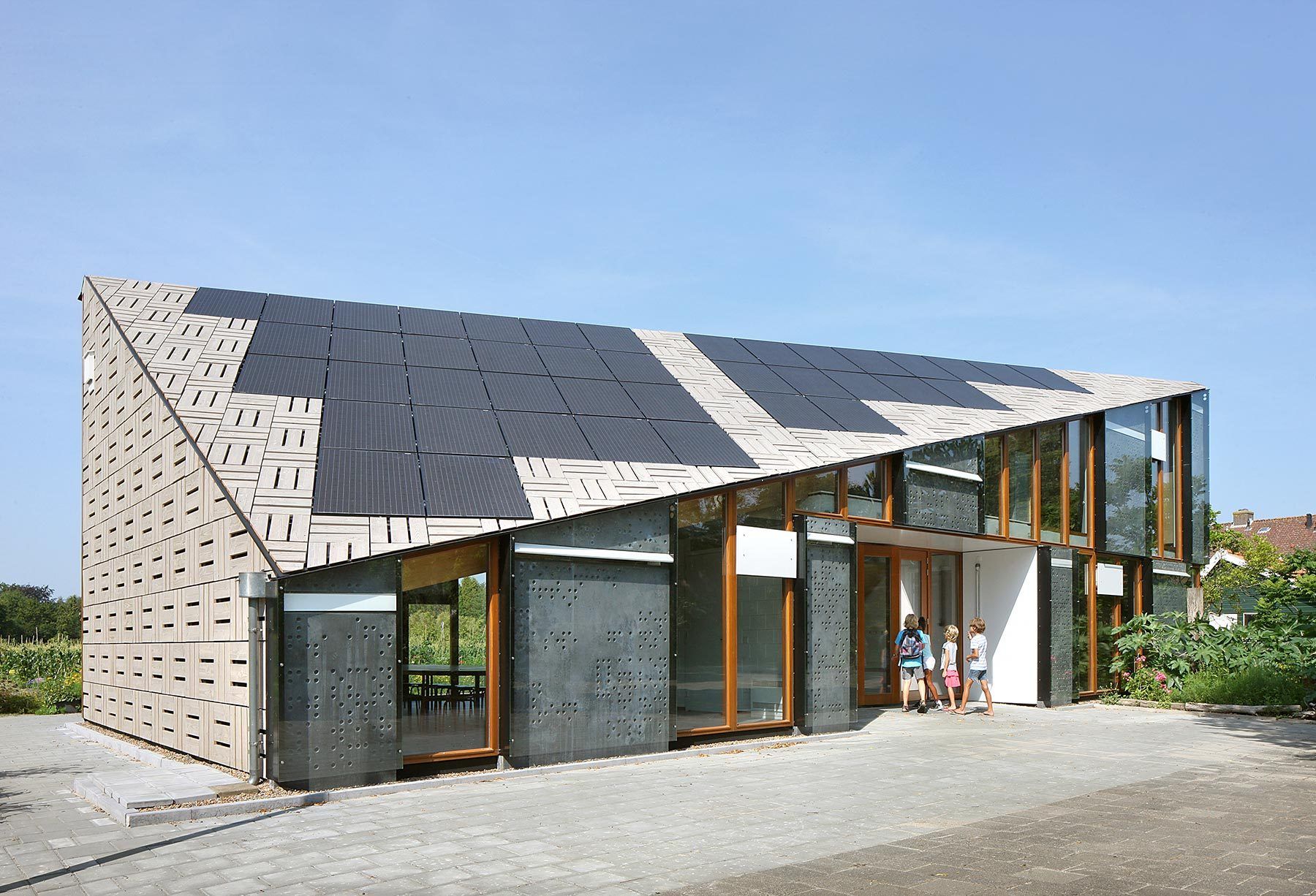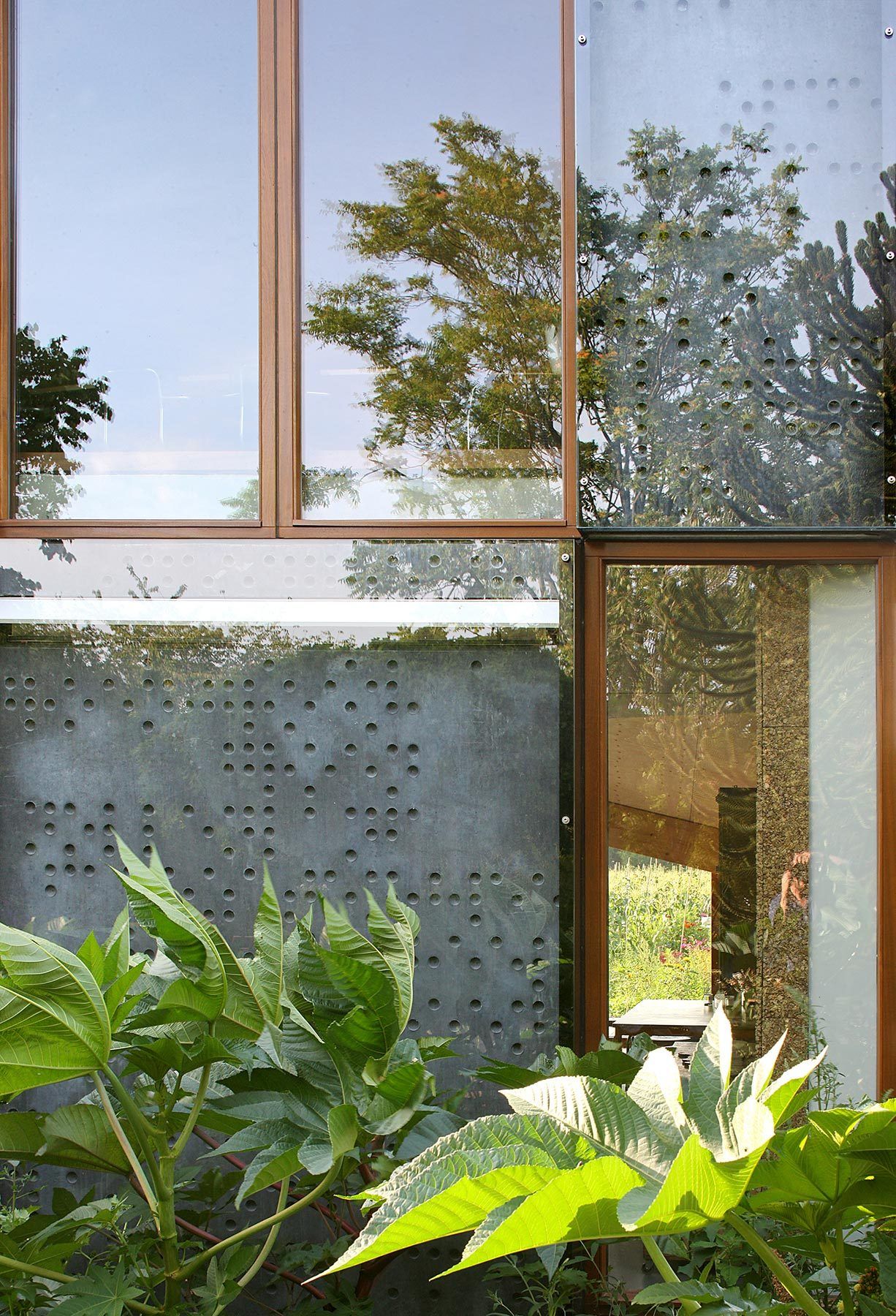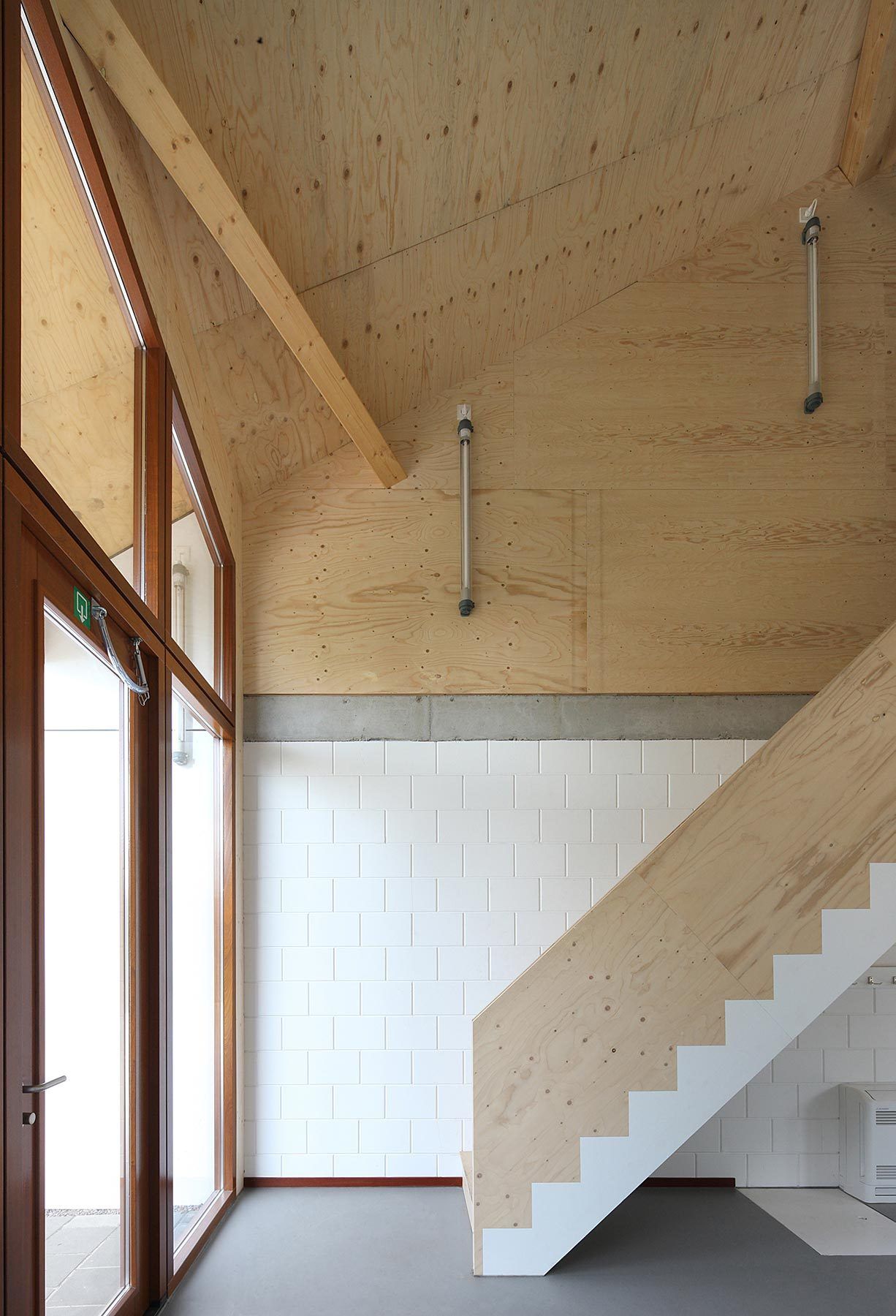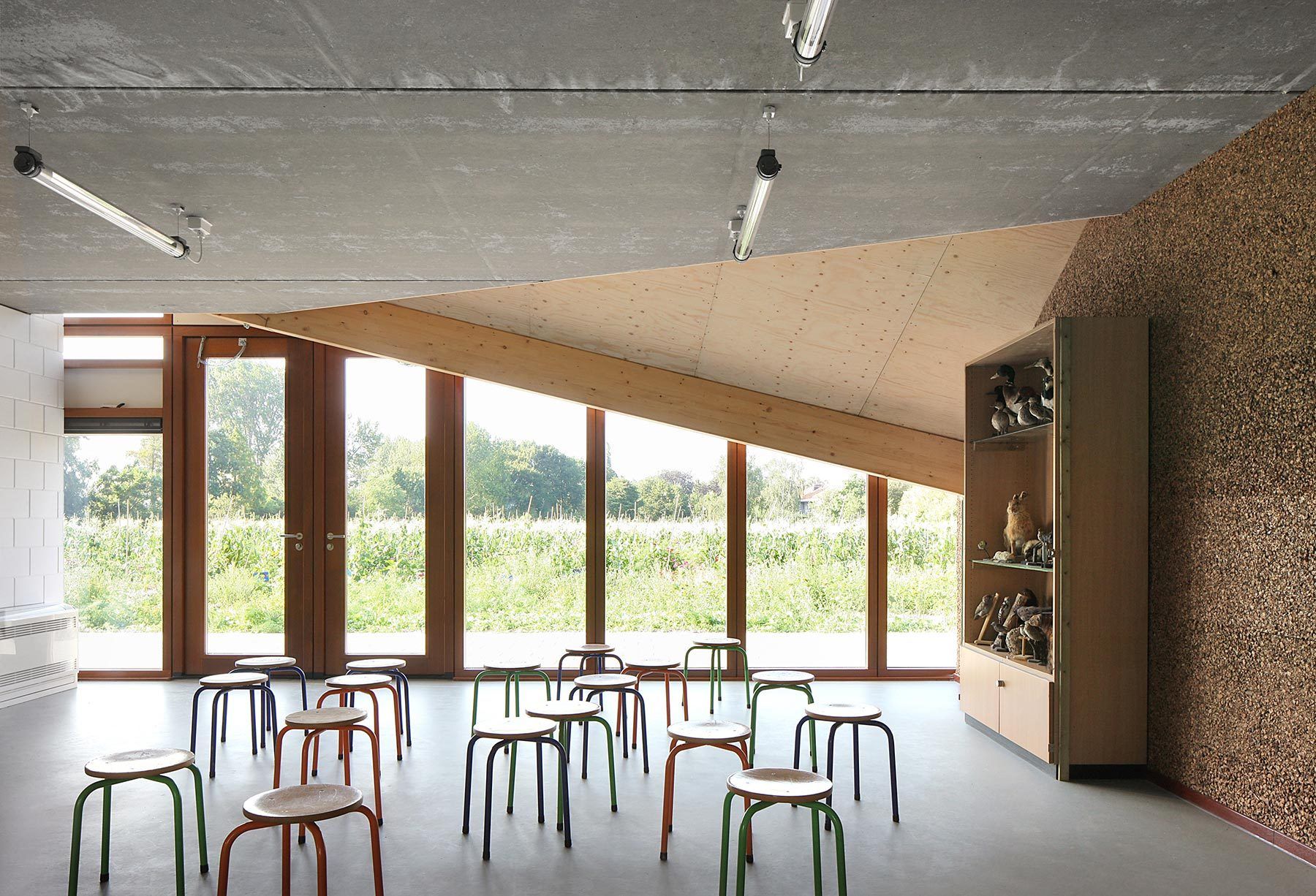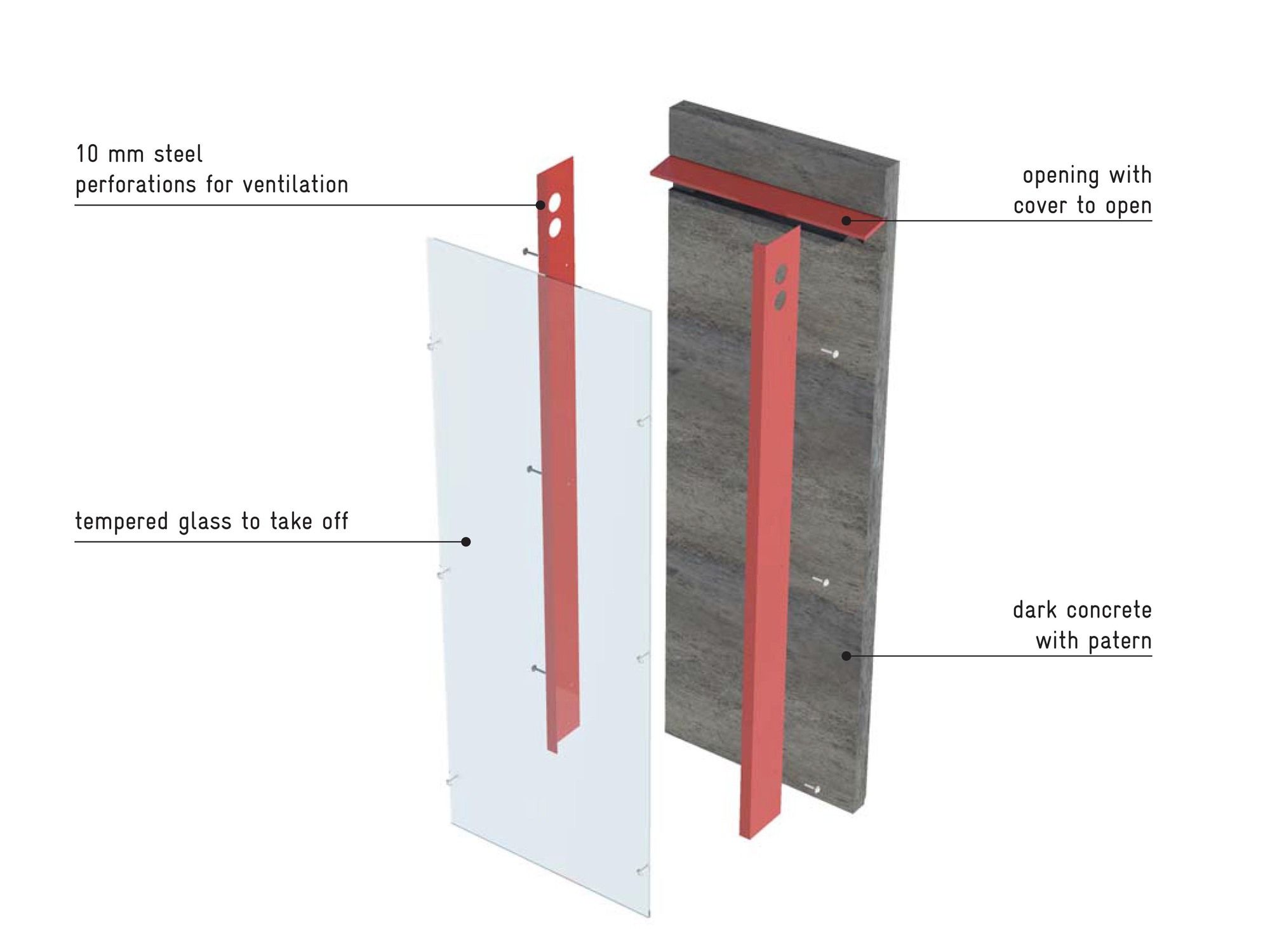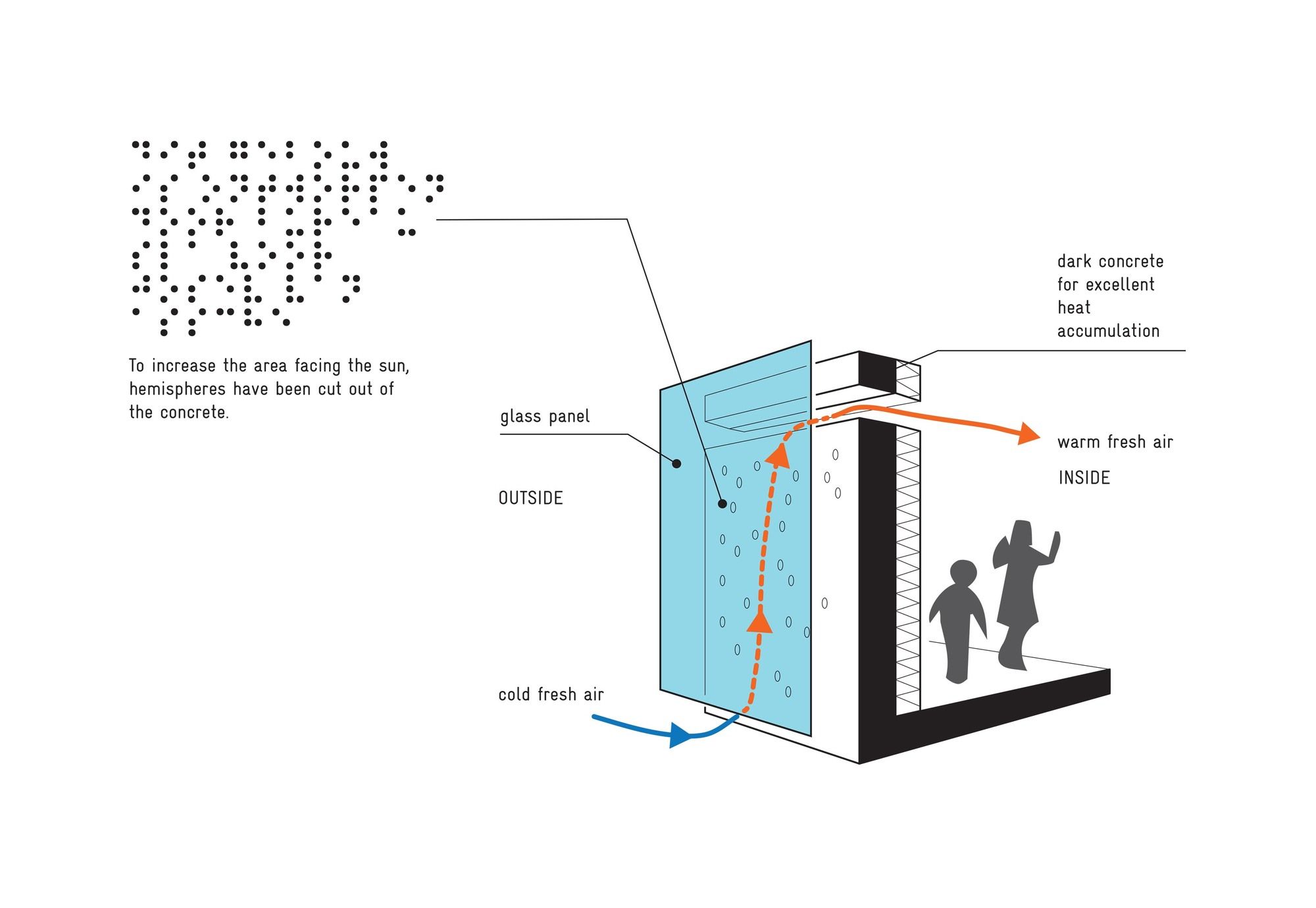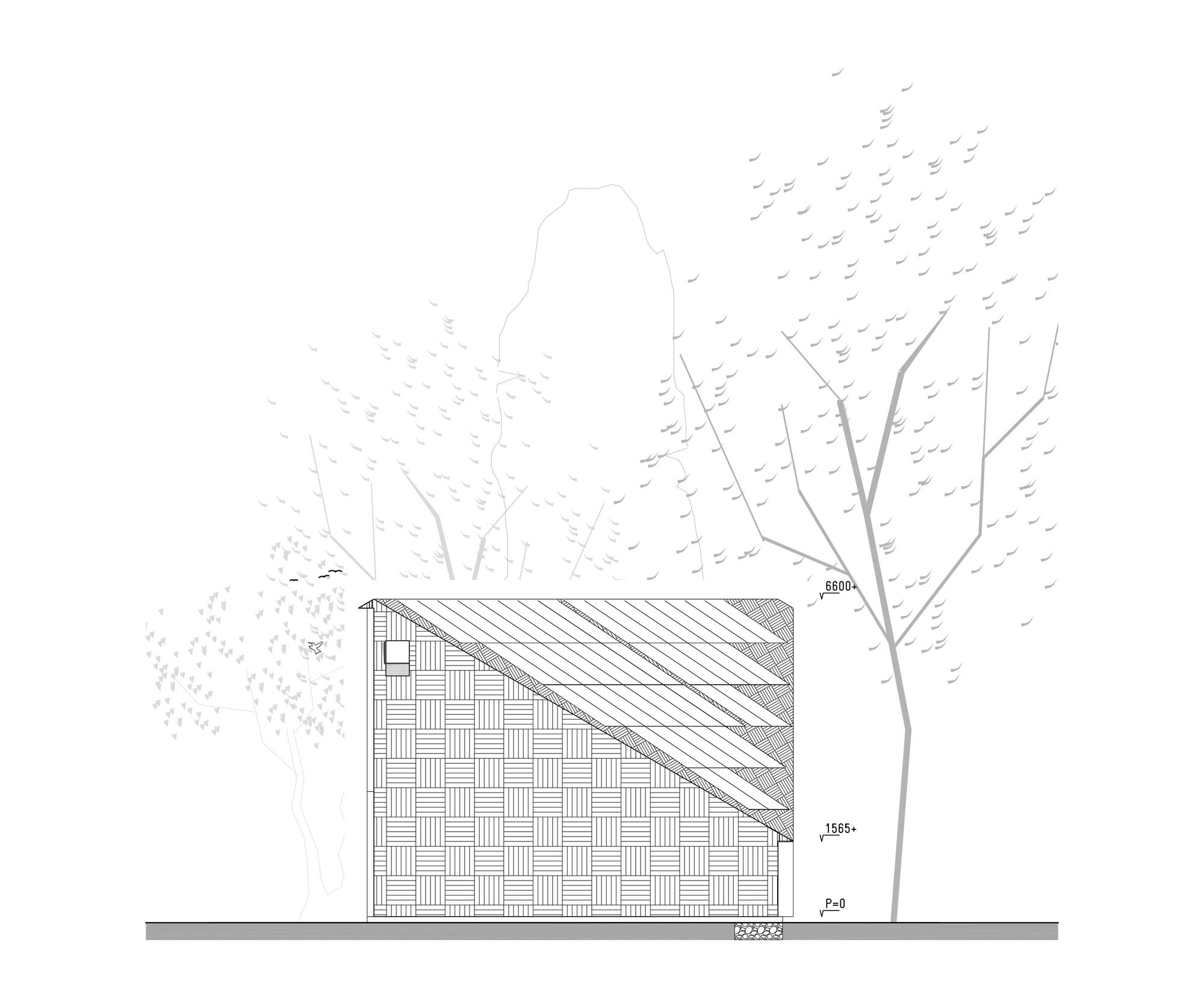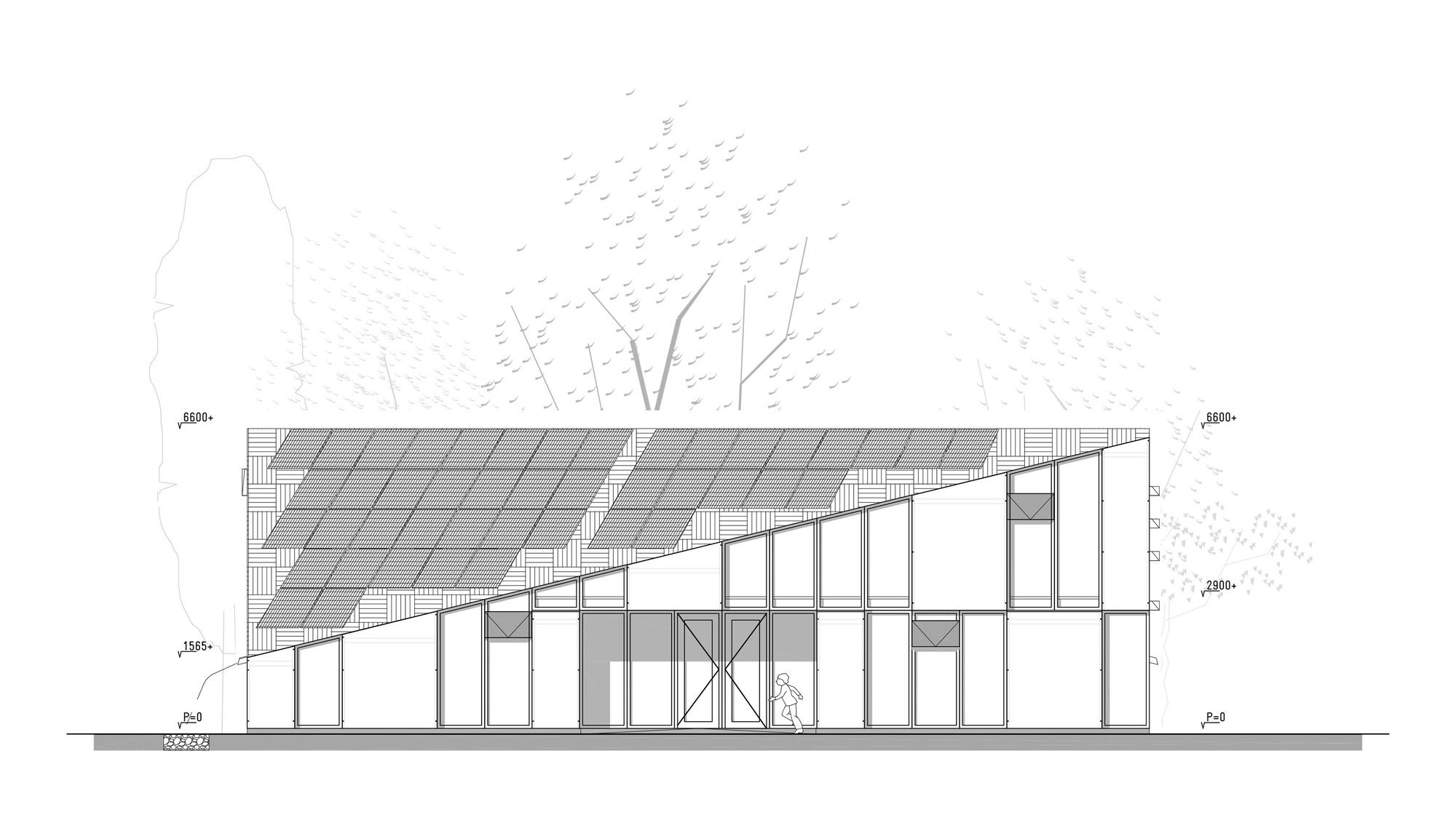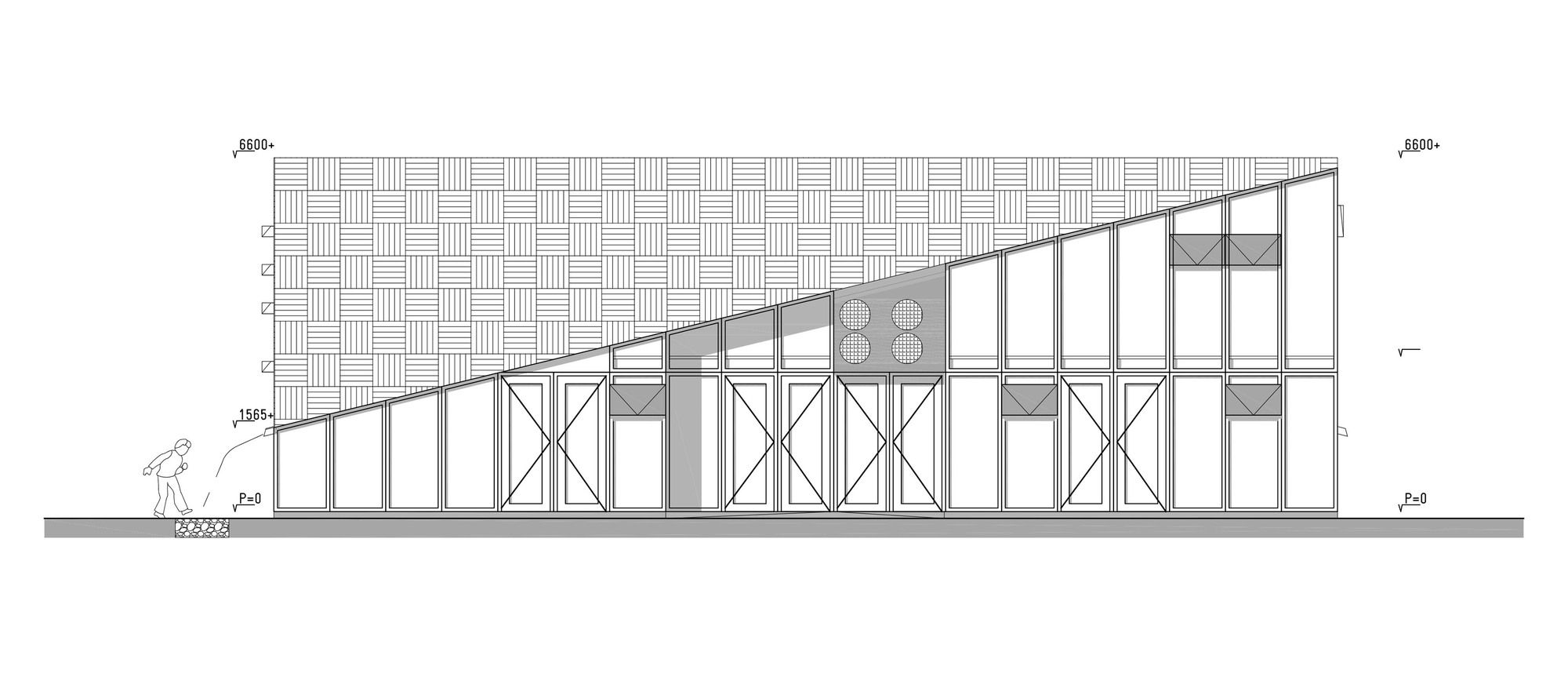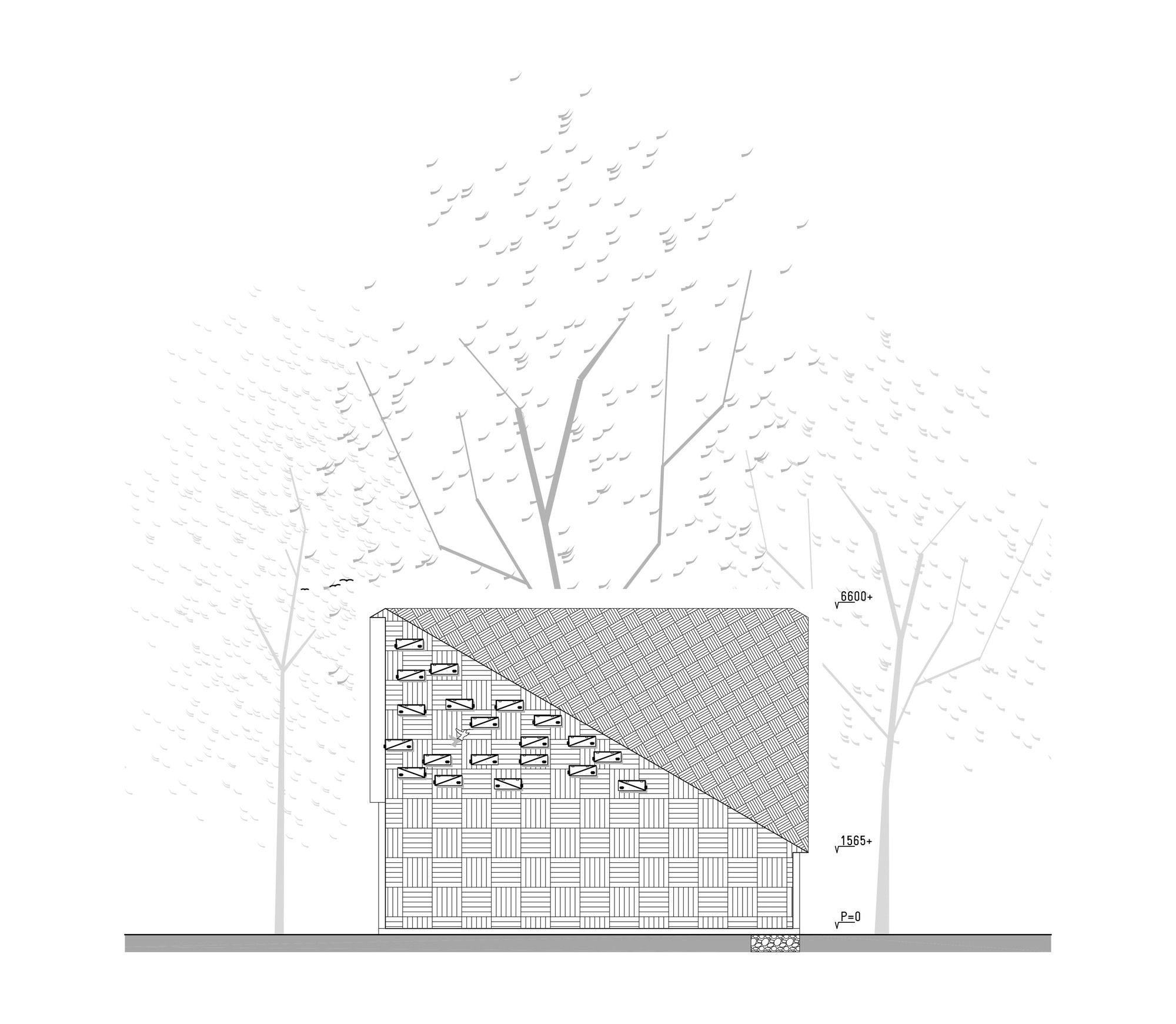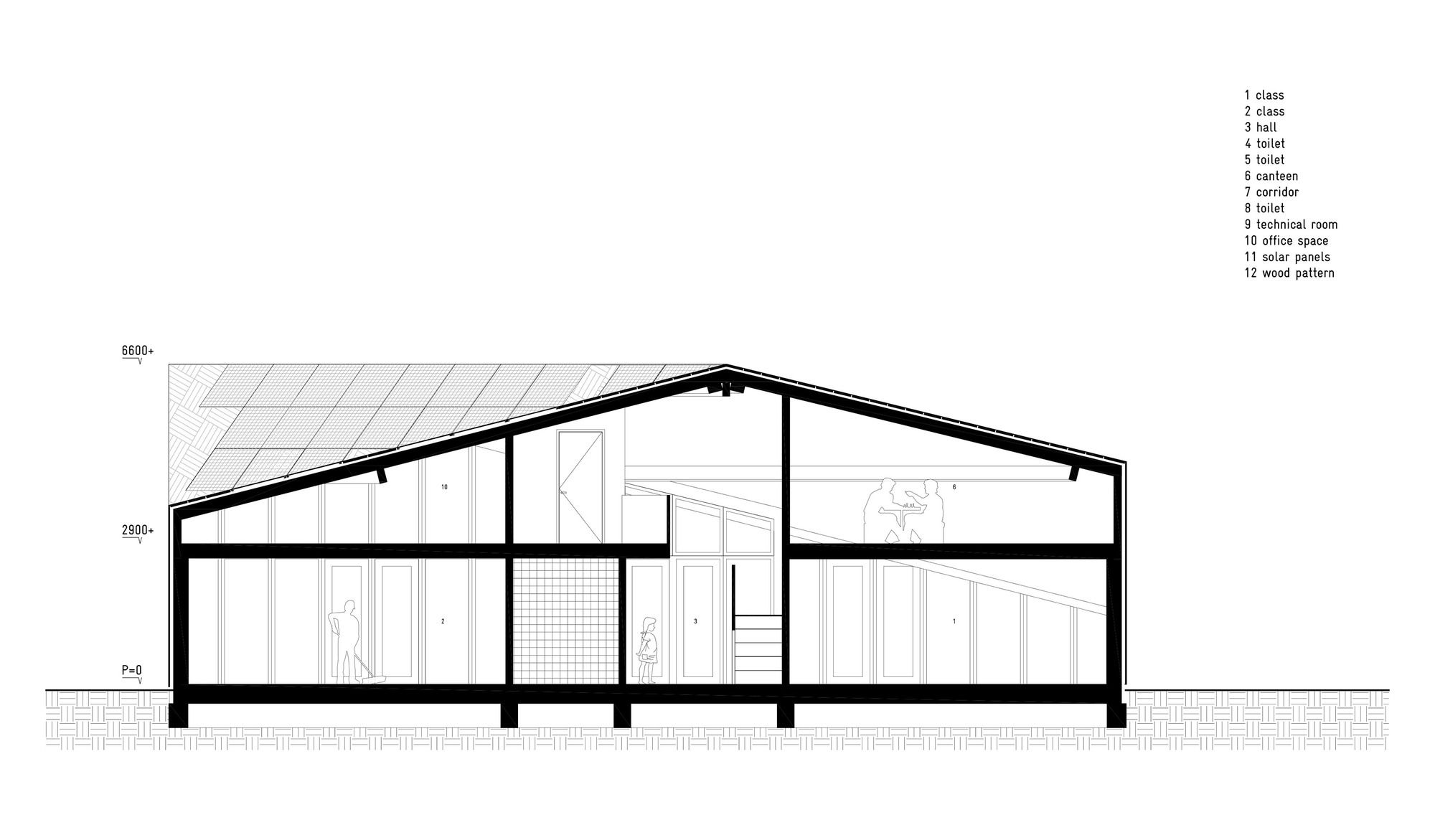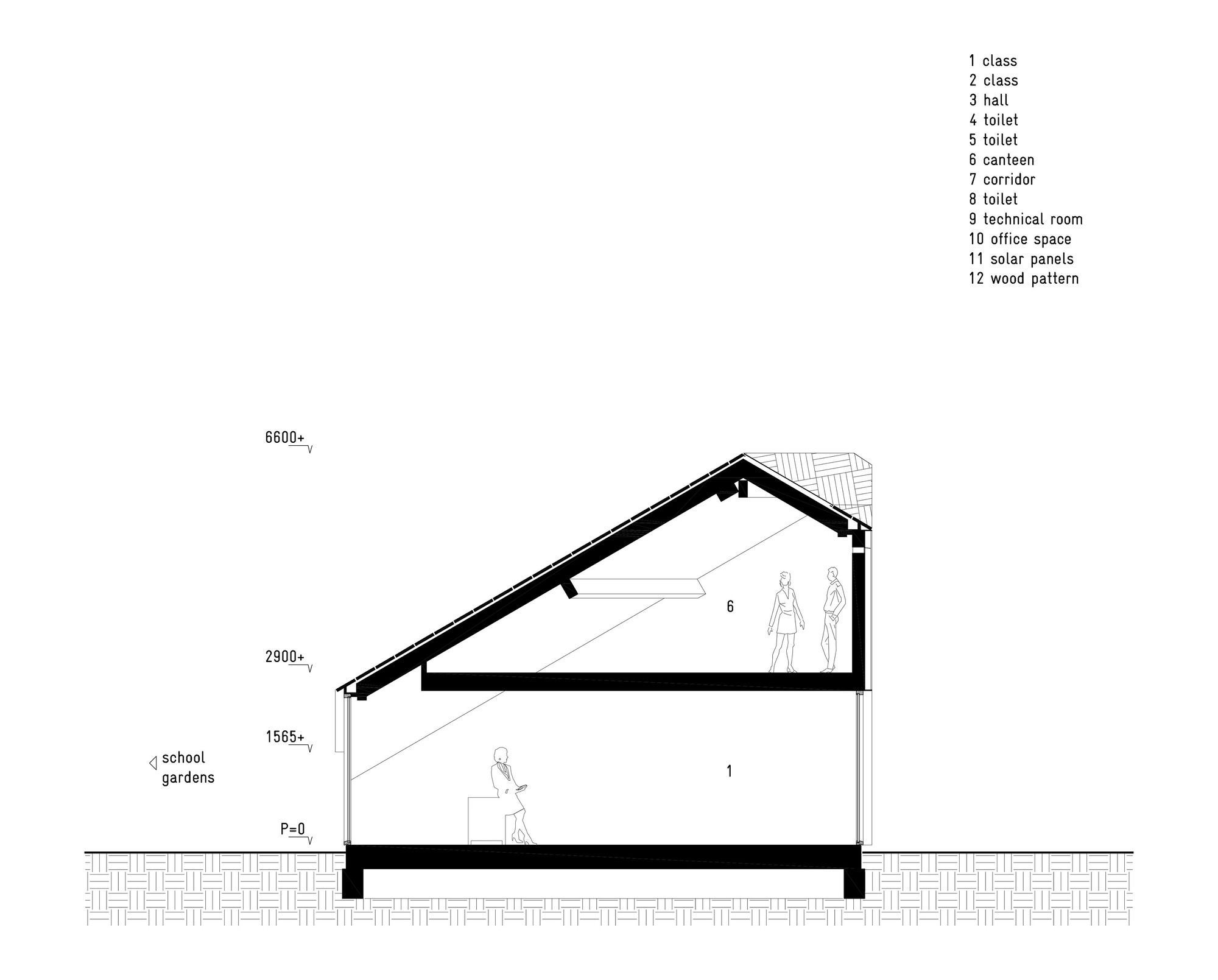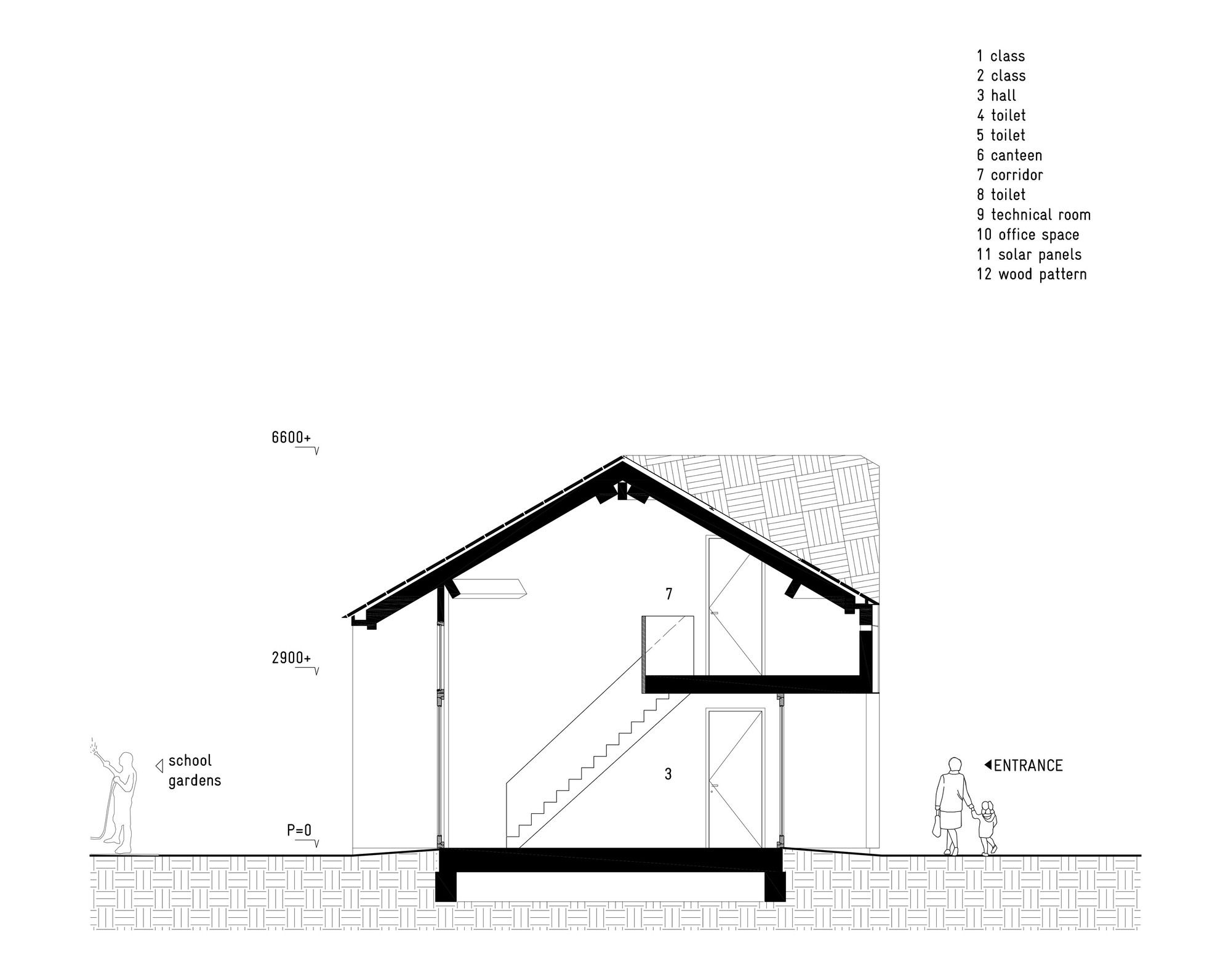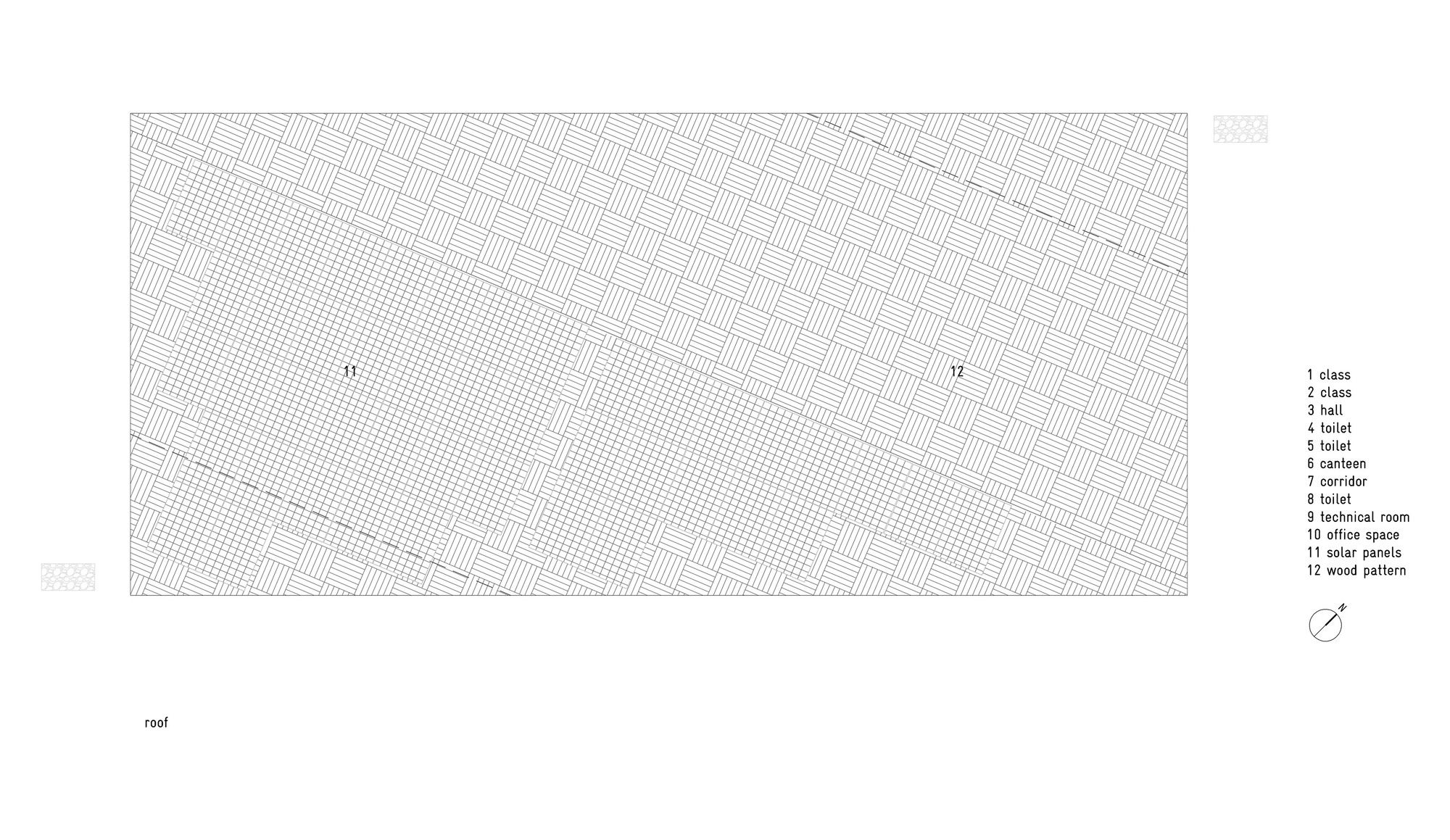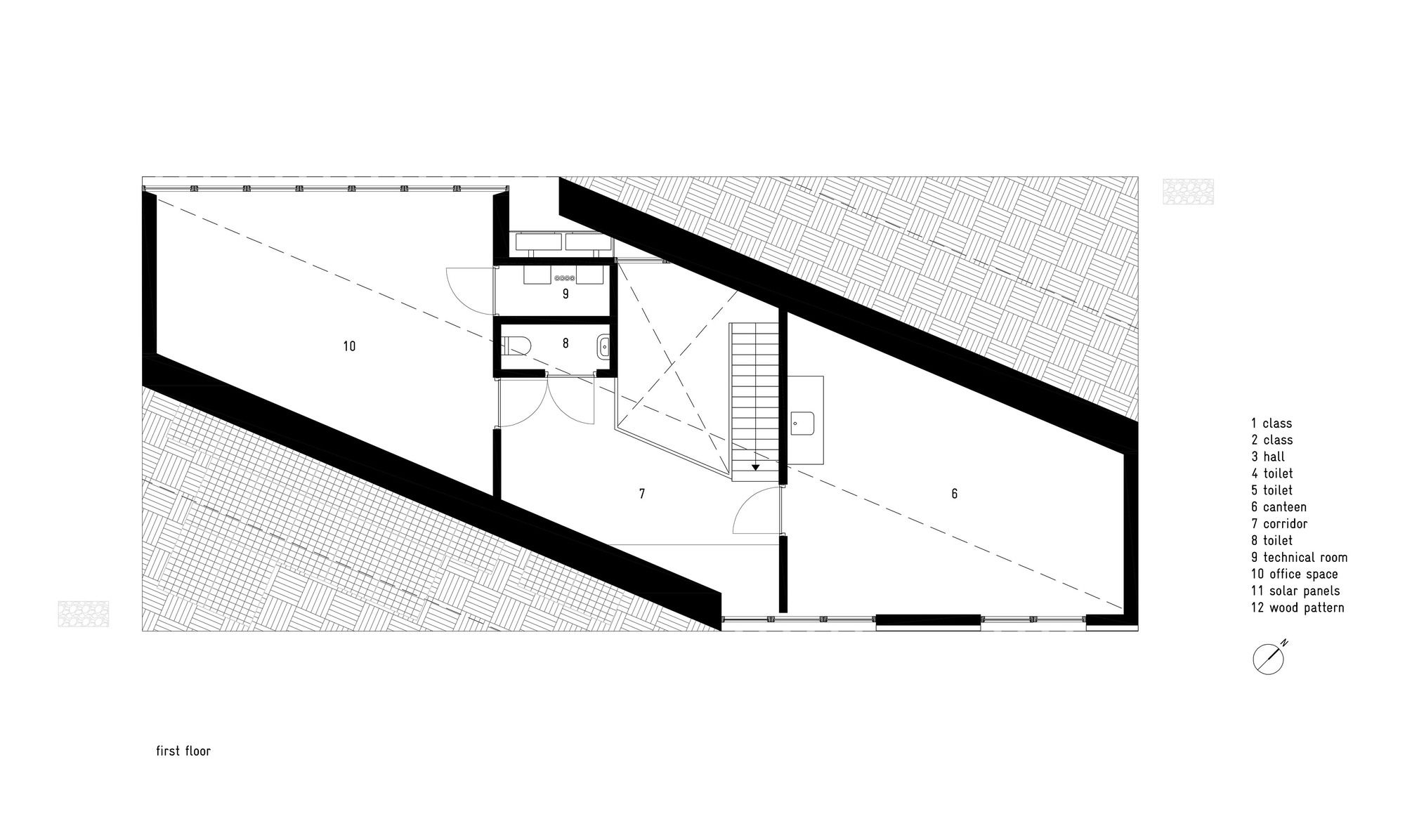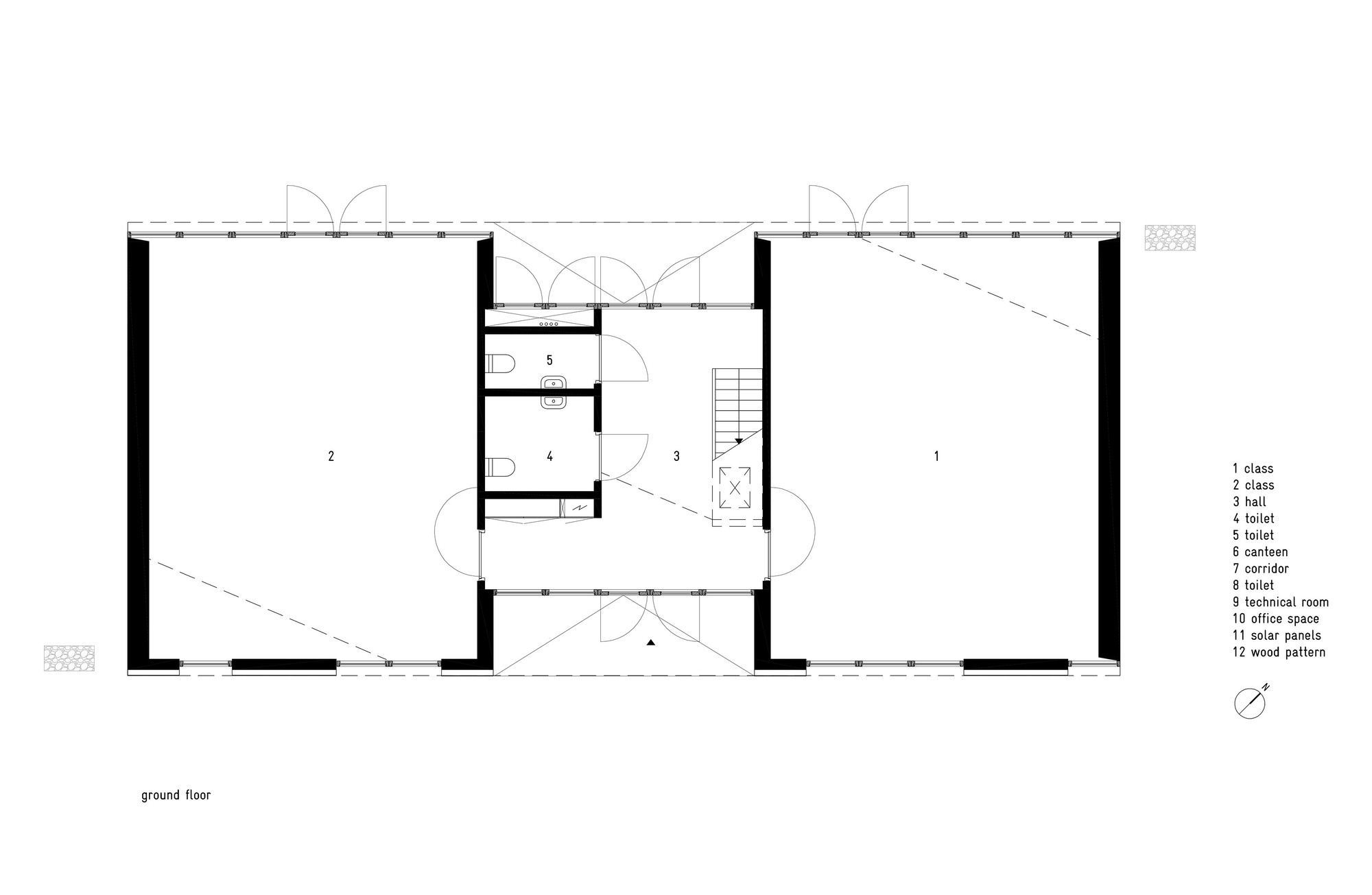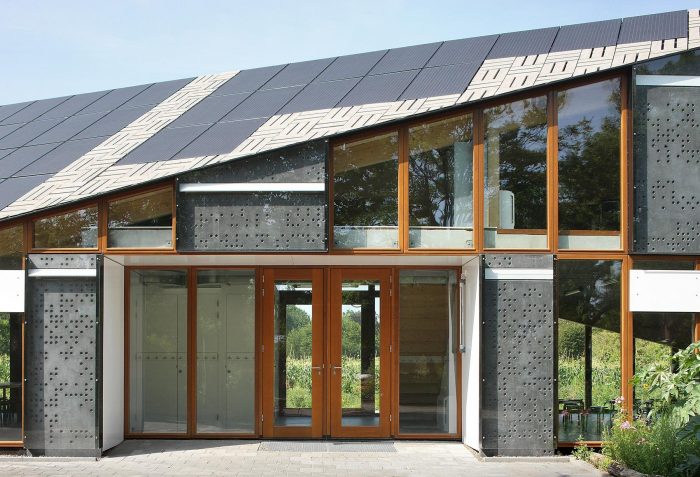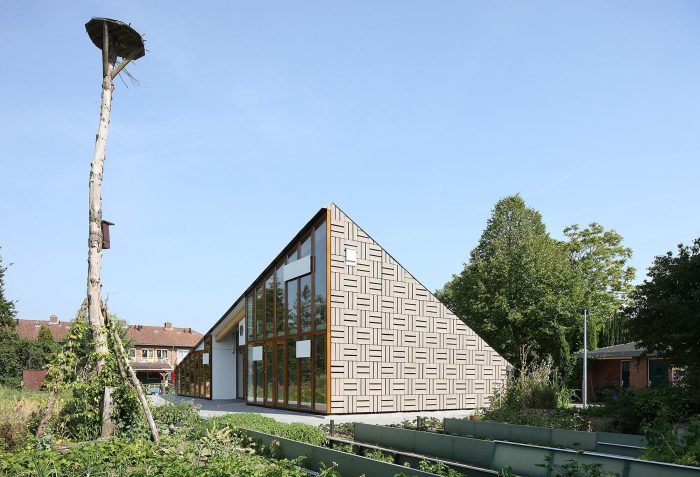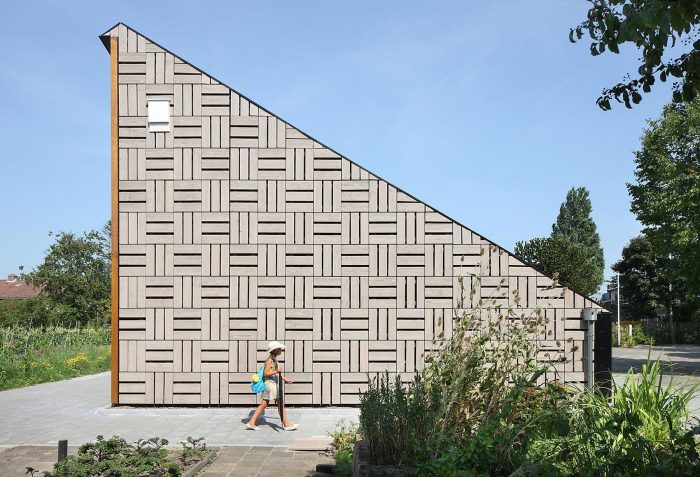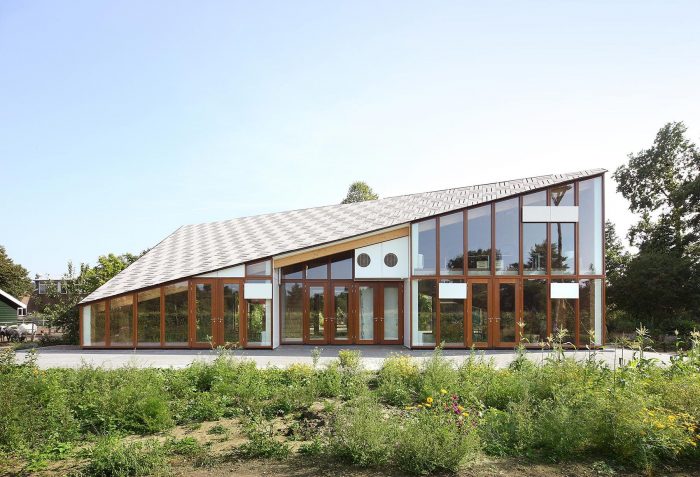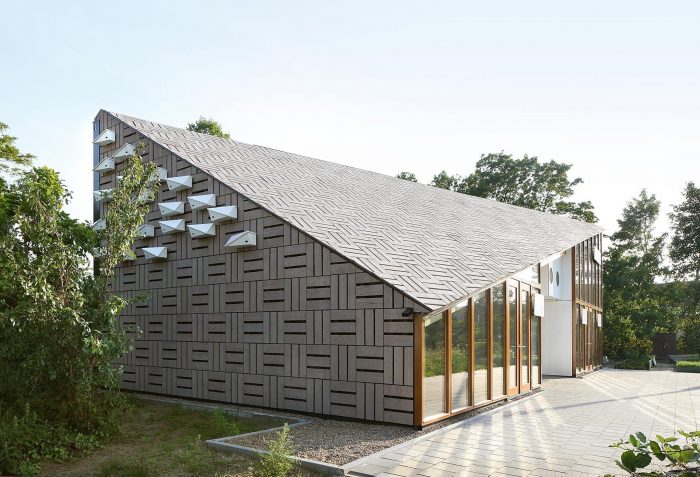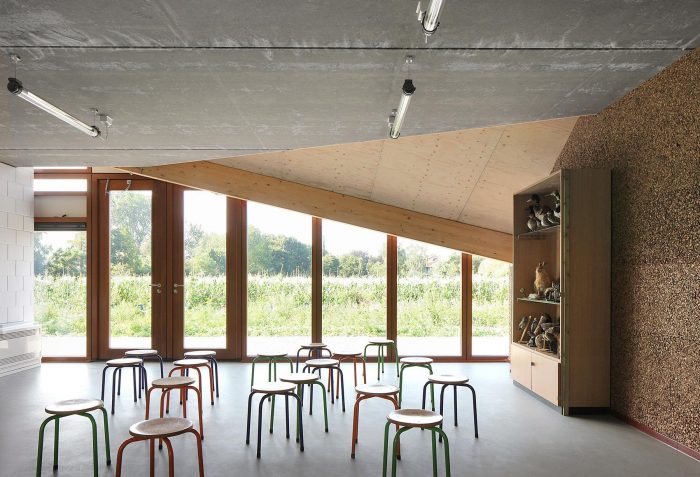Designed by Bureau SLA, In Amsterdam, every primary school student is provided with his or her own 6m2 garden to care for. These students are also enrolled in classes where they learn about nature and the environment, held in one of the buildings dedicated to the purpose throughout Amsterdam. As of this year though, Amsterdam Noord becomes host to a new building designed specifically for this purpose: Nature & Environment Learning Centre. This new building replaces two temporary structures (which housed the program for the previous five years). In addition to being the first purpose-designed and build a center in the program, it’s also unique in that it works both as a classroom and as an educational tool itself: the bus Olding’s sustainability can be seen and be felt by all who come in contact with it.
As would be expected, Nature & Environment Learning Centre (NME) is energy neutral. This in and of itself is not unusual: the nonconsumption of fossil fuels is a property of almost any new building (or at least it should be). What makes the energy management of the NME interesting is that its sustainability is visible, tangible, and easily perceptible to even the most casual observer. For example, the seemingly eccentric shape of the building turns out to be a completely functional one, dictated by a desire to achieve optimal orientation of the roof towards the sun, thereby maximizing the efficiency of the bus Olding’s solar collectors. There are also the large concrete slabs – Trombe Walls, more about those below – at the front of the building, which heats up the fresh air before it enters the classrooms, thus placing less demand on the heating system.
The location of the NME, situated in the middle of the school gardens of Amsterdam Noord, was just about perfect: a rectangular plot near the entrance of the site, optimally oriented to the gardens. The only significant challenge was that the long facade of the proposed structure was not precisely south-facing, which meant that the bus Olding’s solar collectors would not have been optimally placed for collecting the sun’s rays. But by positioning the ridge of the roof exactly along an east-west axis – offset from the walls of the building – two things were accomplished: firstly it solved the solar collection issue by ensuring the solar collectors were precisely south-facing, and secondly it provided the building with its very distinctive shape. The design of the Centre’s roof also provided another learning opportunity for students due to its close proximity to the ground: at the roof ’s lowest point even small children can easily see the solar panels. Inside the building, the floor plan is almost symmetrical, with the entrance in the middle. On the left and right are classrooms of equal size and on the first floor, two identical rooms serve as a office space and a canteen. In the middle, there is nothing, which provides a view through the glass entrance doors straight through to the school gardens on the far side of the building.
The north facade consists of window frames of about a meter wide, top to bottom. Operable window parts are clad with white lacquered wooden panels, providing an uninterrupted pattern of long vertical window frames. On the south side, mixed in with traditional windows, are eight dark concrete slabs – sitting behind glass windows – mounted to the facade. These are what are known as Trombe walls, a 1960s design of the French engineer Félix Trombe (1906 – 1985). Although they’ve never gained a significant foothold in the design of sustainable buildings, Trombe walls provide a simple and intelligent passive solar heating solution. The concrete slab – mounted behind the exterior window – is heated up by sunlight. In the gap between the glass and the slab, fresh air is, in turn, heated by the slab. From the inside of the building, there is a small slat that can be open or closed. On a cold day, the slat is opened, allowing the slab-heated fresh air to heat the interior of the building. On a warm day, the slat is kept closed, keeping the warm air out.
Nature & Environment Learning Centre shows that Trombe-walls not only work very well l but that they can also provide a detail that is both architecturally and aesthetically pleasing. In order to increase the surface area of the concrete walls, a pattern of recessed hall feel ls is fitted. This pattern can literally be read – in brail leas an anthology of Dutch nature poetry.
The Centre’s roof and end walls are clad with wooden slats, which don’t function as weather-proofing but serve to hide the bitumen roofing from view. Using the slats also means that the solar panels – placed in gaps in the slotting – appear flush with the roof, instead of sitting on top of it (which is typically an eyesore). The wood cladding also provided another opportunity for expression: in most wood-clad buildings the slats are arranged either horizontally or vertically. But when wood – as in this case – is used as a purely decorative element, many more possibilities are imaginable.
Wood flooring, for example, exists in a rich variety of laying patterns, and with equally exotic names: herringbone or block pattern, Hungarian Point of Versai l less. In Nature and Environment Learning Centre, the wood cladding consists of a block pattern of three boards, whose dimensions are matched to the solar panels. And finally, there is something of a residential aspect to Nature & Environment Learning Centre: the east exterior wall count 21 designer birdhouses: 20 for swifts and one for a bat.
Project Info:
Architects: Bureau SLA
Location: Heggerankweg 871, 1032 JC Amsterdam, The Netherlands
Design Team: Peter van Assche, Ninja Zurheide, Ane Arce Urtiag, Joti Weijers Coghlan
Area: 281.0 sqm
Project Year: 2015
Photographs: Filip Dujardin
Project Name: Nature & Environment Learning Centre


